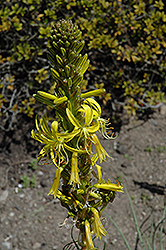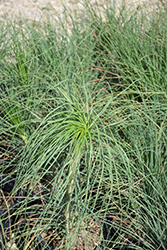Plant Height: 30 inches
Flower Height: 4 feet
Spread: 12 inches
Sunlight:
![]()
Hardiness Zone: 5
Description:
An interesting garden addition with fine wispy blue-green grassy foliage mounds producing towering flower spikes with large clusters of buds that each open randomly revealing bright yellow blooms; adds a real Mediterranean feel
Ornamental Features
Jacob's Rod features bold spikes of yellow star-shaped flowers at the ends of the stems from mid to late spring, which emerge from distinctive chartreuse flower buds. Its twisted grassy leaves remain bluish-green in color throughout the season.
Landscape Attributes
Jacob's Rod is an herbaceous perennial with a rigidly upright and towering form. It brings an extremely fine and delicate texture to the garden composition and should be used to full effect.
This plant will require occasional maintenance and upkeep, and is best cleaned up in early spring before it resumes active growth for the season. It is a good choice for attracting bees and butterflies to your yard. It has no significant negative characteristics.
Jacob's Rod is recommended for the following landscape applications;
- Mass Planting
- General Garden Use
Planting & Growing
Jacob's Rod will grow to be about 30 inches tall at maturity extending to 4 feet tall with the flowers, with a spread of 12 inches. It has a low canopy with a typical clearance of 1 foot from the ground. It grows at a medium rate, and under ideal conditions can be expected to live for approximately 10 years. As an herbaceous perennial, this plant will usually die back to the crown each winter, and will regrow from the base each spring. Be careful not to disturb the crown in late winter when it may not be readily seen!
This plant should only be grown in full sunlight. It does best in average to evenly moist conditions, but will not tolerate standing water. It is particular about its soil conditions, with a strong preference for poor, alkaline soils. It is somewhat tolerant of urban pollution. Consider applying a thick mulch around the root zone in winter to protect it in exposed locations or colder microclimates. This species is not originally from North America. It can be propagated by division.

